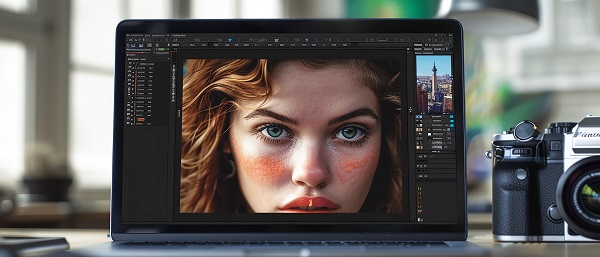The Art of Image Cropping in Design

When it comes to design, the art of image cropping holds a pivotal role in shaping visual narratives and evoking emotions. By carefully trimming away the excess and honing in on key elements, a designer can transform a simple image into a compelling story waiting to unfold.
The strategic decisions made during the cropping process can make or break the impact of a design piece, leaving viewers captivated and craving more insight into the thought process behind each precisely cropped image. So, let’s dive deep into the art of image cropping in design.
Principles of Effective Image Cropping
Understanding and applying the principles of effective image cropping is essential in achieving visually pleasing compositions for design purposes.
The rule of thirds serves as a helpful guideline for determining where to crop an image, encouraging designers to align key elements along these imaginary lines to enhance balance and visual interest.
Balancing negative space is another critical aspect of image cropping, as it helps to highlight the main subject and create a sense of cohesion within the design.
Additionally, maintaining image quality throughout the cropping process is crucial to ensure the final composition remains sharp, clear, and professional-looking.
By the way, visit PNGimages.com for free images.
Techniques for Visual Impact
Utilizing various cropping techniques such as hard, soft, split, stickout, and shape crop can significantly enhance the visual impact of cropped images. These techniques allow for emphasizing focal points, improving composition, and creating a dynamic aesthetic appeal.
Balancing negative space, ensuring image quality, and experimenting with different crop ratios are crucial for achieving visually striking results. Staying updated on design trends and understanding the psychology of image cropping can help align your work with current preferences and evoke specific emotions in viewers.
Importance in Visual Communication
Understanding the importance of image cropping in visual communication is crucial for creating visually appealing designs. Skillful cropping allows for a focus on essential elements, removal of distractions, and improvement of overall composition.
This technique enhances storytelling by directing attention to specific details, conveying realism, and adding depth to designs. Effective cropping methods can create visual intrigue, highlight key elements, and guide the viewer's gaze through the design, resulting in a more engaging visual experience.
Incorporating precise cropping techniques into design processes can enhance the message, aesthetics, and overall impact of visual communication projects. Mastering the skill of image cropping is fundamental for producing striking and memorable designs.
Creative Applications in Design
Utilizing image cropping in design offers a range of practical benefits for enhancing visual communication. Precision cropping can direct the viewer's attention to specific elements within a composition, ensuring clarity and emphasis on focal points.
By eliminating superfluous details through strategic cropping, designers can streamline the visual narrative and maintain a cohesive aesthetic. Furthermore, resizing images accurately through cropping techniques can optimize print quality and enhance overall visual appeal.
Image editing tools provide a variety of options for experimenting with different cropping styles, enabling designers to innovate and create impactful design solutions.
Impact on T-shirt Design
Image cropping is an essential aspect of enhancing the visual impact of t-shirt designs, particularly in emphasizing dynamic images and creating a sense of movement that aligns with current industry trends. When cropping an image for a t-shirt design, it's important to consider how it will appear on various styles such as crew necks, V-necks, and tank tops.
Utilizing tools like Adobe Photoshop, CorelDRAW, or Canva can help ensure that the cropped image complements the particular garment style chosen. It's also crucial to leave some space around the cropped image, as this can significantly impact the overall aesthetic of the design.
Optimize the cropped image for printing by focusing on color management and selecting suitable file formats to ensure the final product meets high-quality standards.
Conclusion
In conclusion, mastering the art of image cropping in design is essential for creating visually appealing and impactful communication pieces. By applying principles and techniques effectively, you can enhance composition, focus on key elements, and guide the viewer's gaze.
Whether it's for storytelling, branding, or creating memorable designs, image cropping plays a crucial role in elevating the overall aesthetic and communication impact of your work. Keep honing your skills and experimenting with different cropping techniques to create stunning visual designs.



No Comments on "The Art of Image Cropping in Design"
You must be logged in to post a comment.